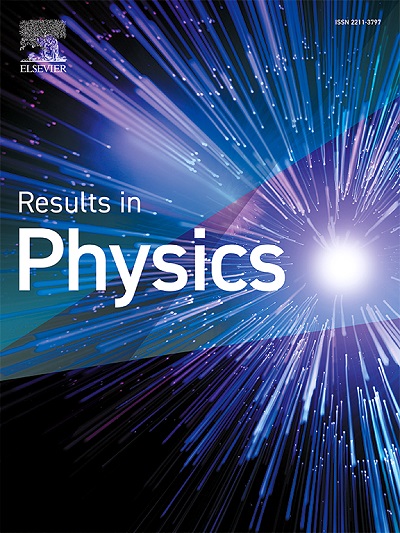Polydisperse stickiness and particle size on light scattering in dense colloidal suspensions: A numerical study using the binary sticky hard-sphere model
IF 4.4
2区 物理与天体物理
Q2 MATERIALS SCIENCE, MULTIDISCIPLINARY
引用次数: 0
Abstract
In nanotechnology using scattered light and colloidal science, it is crucial to model the agglomeration of submicrometer-scale particles and light scattering in dense colloidal suspensions and clarify the quantitative relation between them. We numerically examined the effects of polydisperse stickiness and particle sizes on the scattering properties in the near-infrared optical wavelength using the dependent scattering theory (one of the electromagnetic theory) and bidisperse (binary) sticky hard-sphere (SHS) model at different stickiness parameters and particle sizes. The SHS model has been widely employed as a particle interaction model, but most previous works are for a monodisperse system. Actual suspensions are polydisperse, and our simple bidisperse models allow us to provide a physical interpretation of the two polydisperse effects. We showed that polydisperse stickiness contributions are effectively reduced to monodisperse cases with a mean value of the stickiness parameters. Meanwhile, we showed strong effects of the polydisperse particle size, and its contribution is not reduced to a monodisperse case. At a small particle size (around 100 nm), the polydispersity effects enhance the scattering properties even in the diffusive region of radiative transfer.
稠密胶状悬浮液中光散射对多分散黏性和粒径的影响:二元黏性硬球模型的数值研究
在利用散射光和胶体科学的纳米技术中,建立亚微米尺度颗粒的团聚和密集胶体悬浮液中的光散射模型并阐明它们之间的定量关系至关重要。采用依赖散射理论(电磁理论中的一种)和双分散(二元)粘性硬球(SHS)模型,在不同的粘性参数和粒径下,数值研究了多分散粘性和粒径对近红外波长散射特性的影响。SHS模型作为一种粒子相互作用模型被广泛采用,但以往的研究大多是针对单分散体系的。实际的悬浮液是多分散的,我们简单的双分散模型允许我们提供两种多分散效应的物理解释。我们发现,多分散的粘性贡献有效地减少到具有粘性参数平均值的单分散情况。同时,我们发现了多分散粒径的强烈影响,并且它的贡献并不减少到单分散的情况。在小颗粒尺寸(约100 nm)下,多分散性效应即使在辐射传递的扩散区域也增强了散射特性。
本文章由计算机程序翻译,如有差异,请以英文原文为准。
求助全文
约1分钟内获得全文
求助全文
来源期刊

Results in Physics
MATERIALS SCIENCE, MULTIDISCIPLINARYPHYSIC-PHYSICS, MULTIDISCIPLINARY
CiteScore
8.70
自引率
9.40%
发文量
754
审稿时长
50 days
期刊介绍:
Results in Physics is an open access journal offering authors the opportunity to publish in all fundamental and interdisciplinary areas of physics, materials science, and applied physics. Papers of a theoretical, computational, and experimental nature are all welcome. Results in Physics accepts papers that are scientifically sound, technically correct and provide valuable new knowledge to the physics community. Topics such as three-dimensional flow and magnetohydrodynamics are not within the scope of Results in Physics.
Results in Physics welcomes three types of papers:
1. Full research papers
2. Microarticles: very short papers, no longer than two pages. They may consist of a single, but well-described piece of information, such as:
- Data and/or a plot plus a description
- Description of a new method or instrumentation
- Negative results
- Concept or design study
3. Letters to the Editor: Letters discussing a recent article published in Results in Physics are welcome. These are objective, constructive, or educational critiques of papers published in Results in Physics. Accepted letters will be sent to the author of the original paper for a response. Each letter and response is published together. Letters should be received within 8 weeks of the article''s publication. They should not exceed 750 words of text and 10 references.
 求助内容:
求助内容: 应助结果提醒方式:
应助结果提醒方式:


